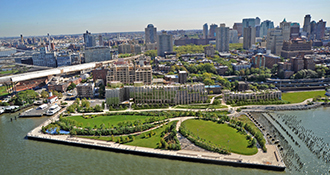Trending
Spurring slow-season sales
As new development sales cool off, marketers are throwing in incentives

Despite the gusto exhibited by the New York City residential market in recent years, developers are now more likely to throw in add-ons to sway prospective buyers of new development projects.
For developers, these incentives serve as an alternative to lowering the prices of their condominium units. Banks prefer that developers do not reduce prices at all; price-chopping can also jeopardize units that are already in contract, because some of those buyers may request a discount as well.
Common incentives include footing the bill for a transfer tax, or offering storage lockers or additional reserved parking spots, according to residential real estate insiders.
“If you’re the buyer at a new development and a listing you like has been just sitting there, that’s a clear indication you can ask for these things,” said Julia Boland, director of new development at William Raveis NYC.
Developers may also cover the city’s mansion tax in a soft market. A buyer of a home at a new development at or above $983,000 will incur the city’s mansion tax, which exists for homes selling for $1 million and up. (The tax starts below $1 million because the government adds the transfer tax of 1.825 percent onto the purchase price, and then considers that sum to be the total price.)
It is far more common for a developer to pay for transfer taxes, though, Boland said.
One of the most prevalent add-ons is the inclusion of one or two storage units, said Roy Kim, head of new development at Urban Compass.
Kim said these concessions are a valuable negotiation tool, but they are still largely occurring at the low-to-middle luxury range of the market, because buyers at the top end rarely have concerns about the transfer tax, for example.
“Developers recognize they really need to provide value,” Kim said. “It’s about giving the buyer a lot in terms of amenities and finishes, rather than a monetary concession.”
Still, not all projects in the city are seeing immediate success from the many bells and whistles.
For example, sales have been hovering at about 55 percent at Toll Brothers’ 108-unit townhouse-style condominium project, Pierhouse at Brooklyn Bridge Park in Brooklyn Heights. An average of five condos entered contract per month between the launch of sales in February and August. Over the past three months, though, the average dropped to two units in contract per month.
“There’s a lot of product for people to choose from and people are moving a bit slower,” said Todd Dumaresq, marketing manager for Toll’s City Living division.
Toll Brothers is considering chopping asking prices, as opposed to offering add-ons, Dumaresq said.
Boland said she sees the offering of add-ons as not necessarily a trend at this time, but something to keep an eye on.
By the spring, pent-up demand for condominiums will likely give way to people buying again, Kim said.
“Sales are sluggish generally because people are cautiously waiting to see what the market will do,” Kim said.
Correction: The article incorrectly included 224 Mulberry Street as an example of properties offering incentives.




